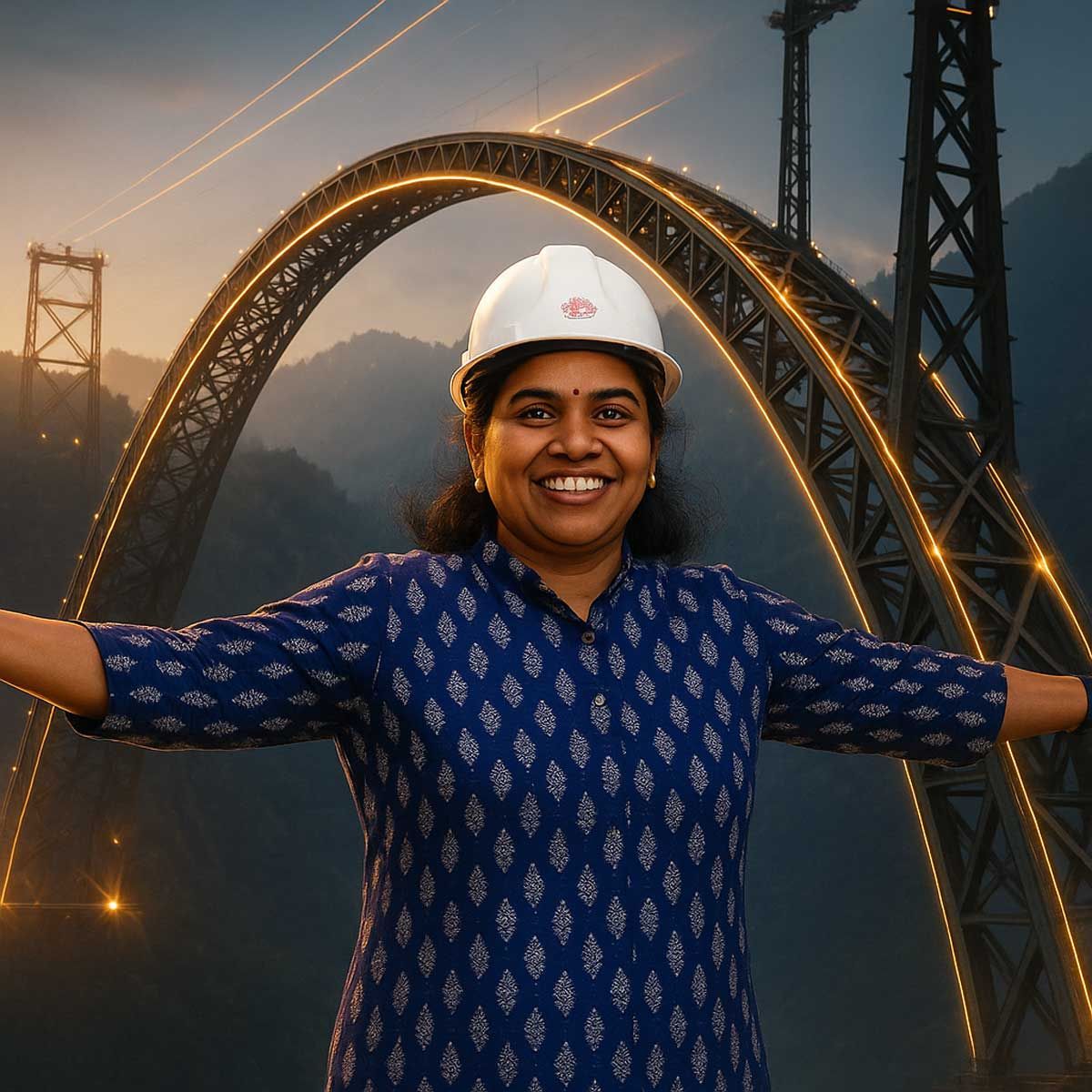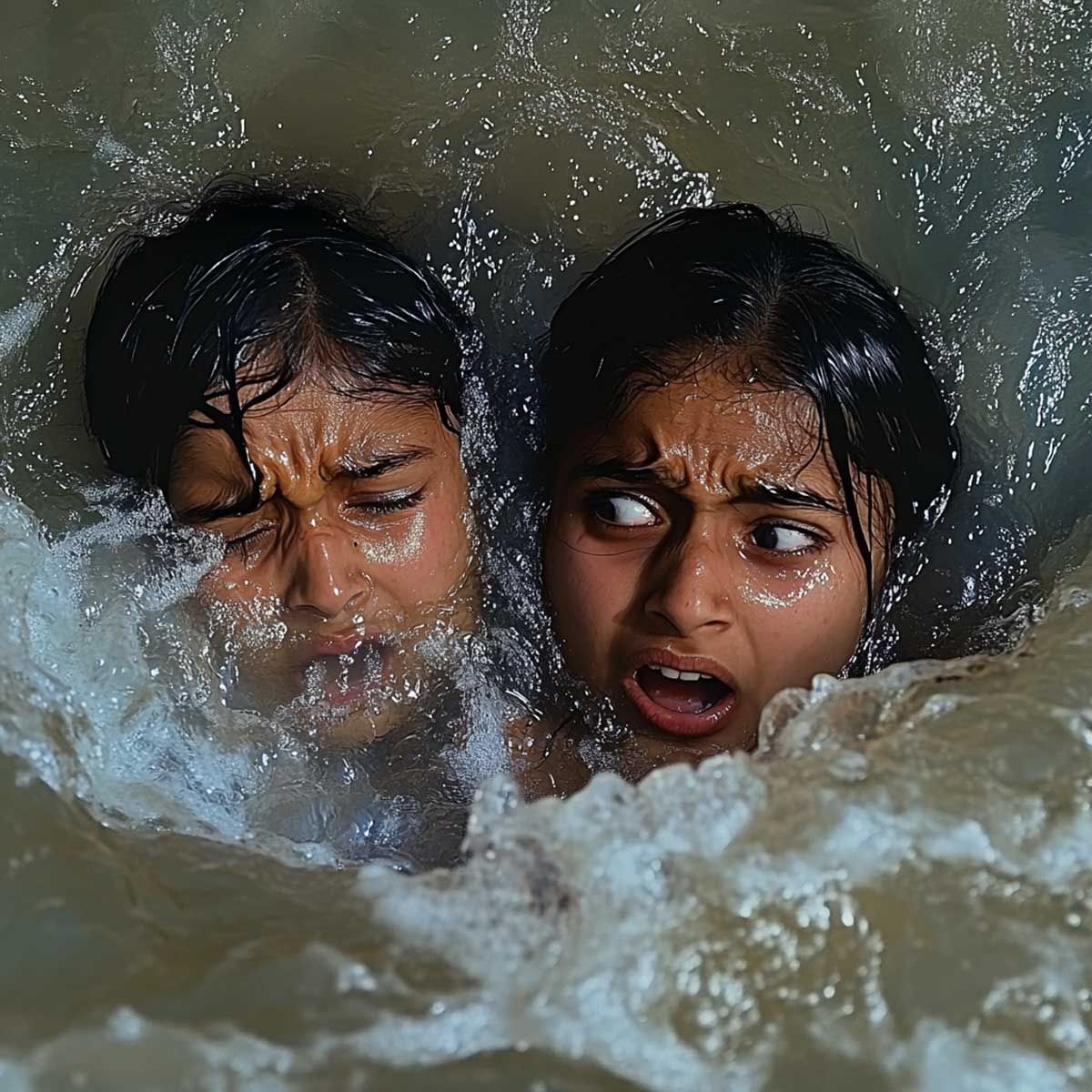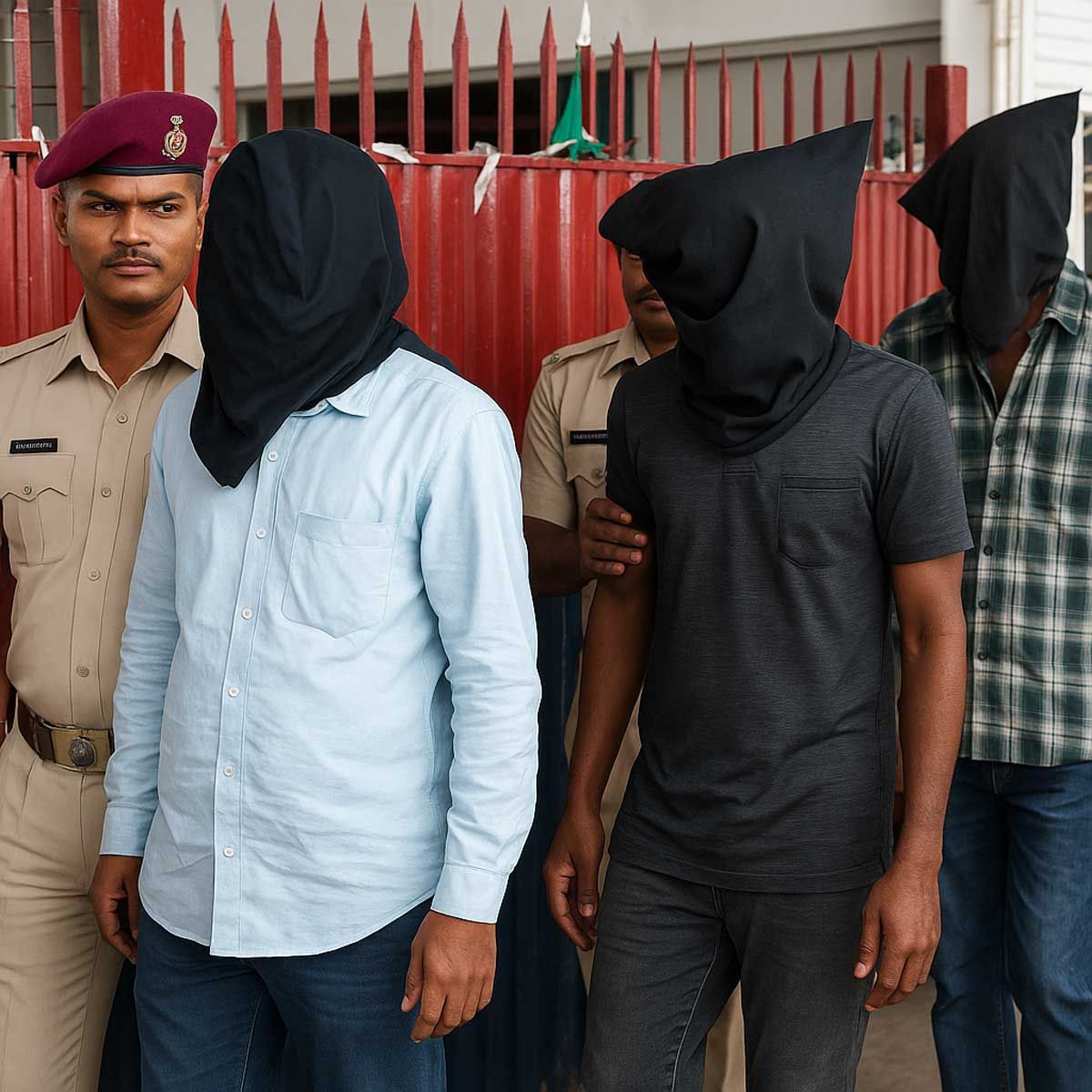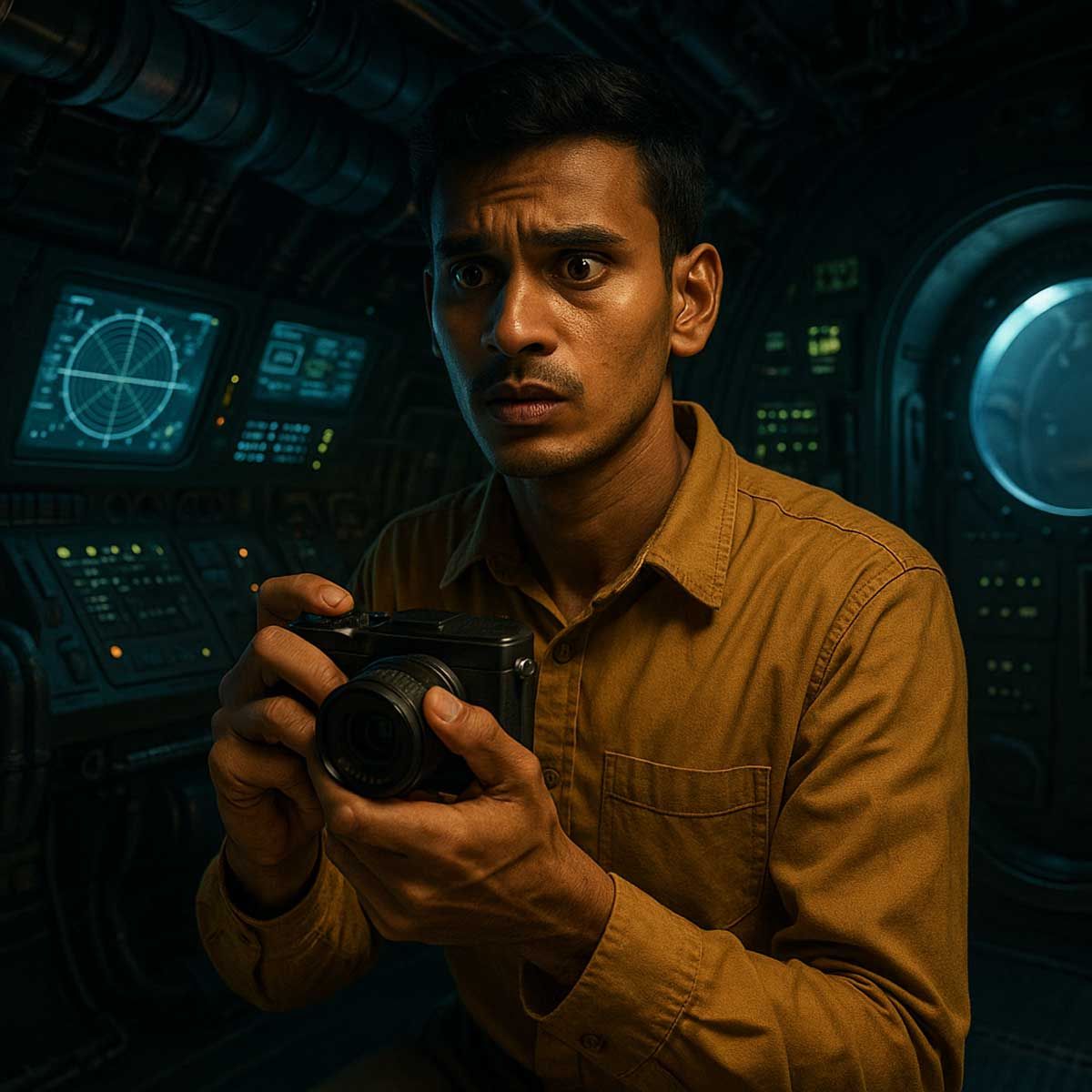More Coverage
Twitter Coverage
Satyaagrah
Written on
Satyaagrah
Written on
Satyaagrah
Written on
Satyaagrah
Written on
Satyaagrah
Written on
JOIN SATYAAGRAH SOCIAL MEDIA
The Lost City of Dwarka and step-motherly treatment to it's Archaeological excavations as revealed by RTI: Shocking state of neglect for Hindu sites by the Government
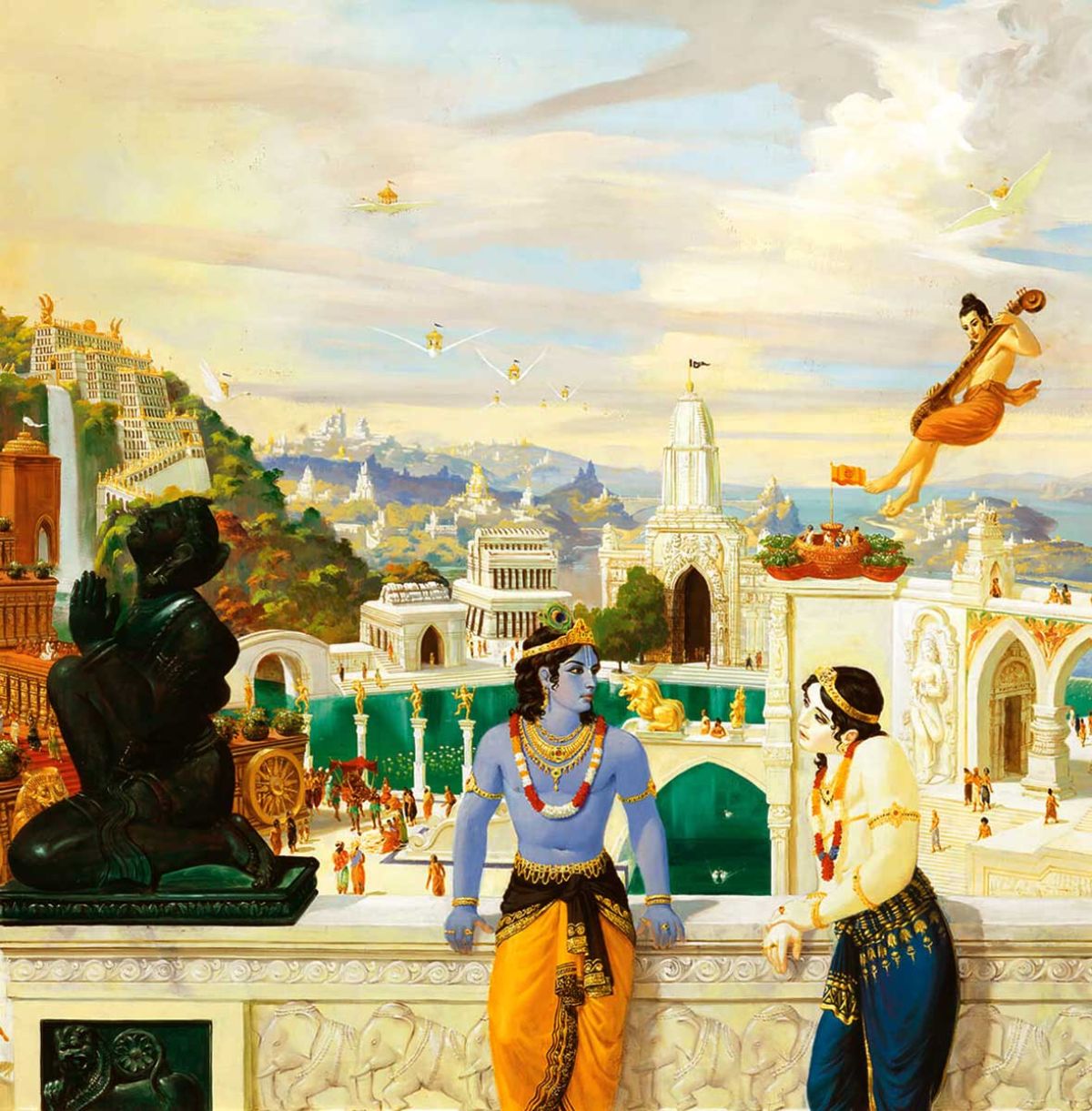
While the Keezhadi excavations continue to be in news and due to pressure by Christian organizations, a huge amount of money and resources are funneled there, excavations at Dwarka are getting a step-motherly treatment by the govt. This also points to a lack of organization and persistence in Hindus regarding their civilizational heritage.
The discovery of the legendary city of Dvaraka which is said to have been founded by Sri Krishna is an important landmark in the validation of the historical relevance of Mahabharata. It has set at rest the doubts expressed by historians about the historicity of Mahabharata and the very existence of Dvaraka city. It has greatly narrowed the gap of Indian history by establishing the continuity of the Indian civilization from the Vedic age to the present day.
The discovery has also shed welcome light on second urbanization in the so-called 'Dark age', on the resuscitation of dharma, on the resumption of maritime trade, and the use of Sanskrit language and modified Indus script. Incidentally, scientific data useful for a study of sea-level changes and effects of the marine environment on metals and wood over long periods has also been generated by underwater exploration. All this was possible because of the dedicated and daring efforts of marine archaeologists, scientists, and technicians of the Marine Archaeology Centre of the National Institute of Oceanography.
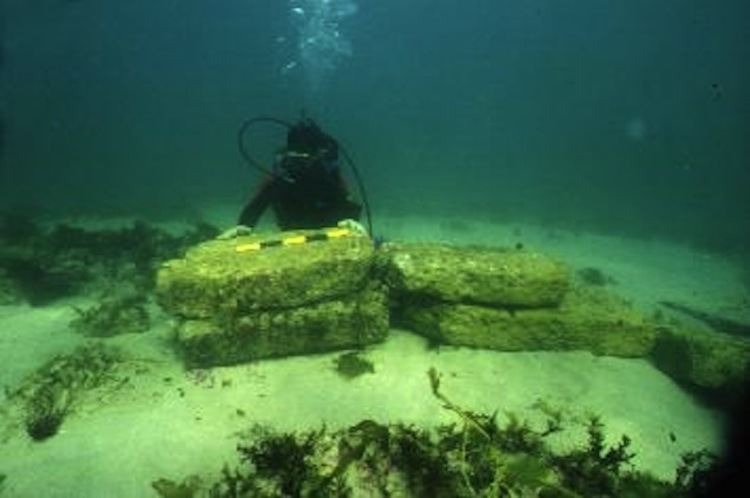 |
Why excavations at Dwarka are important?
Dwarka, situated in the western state of Gujarat is one of the four principles ‘dhams‘ or religious places in Bharat. The other three are at Badrinath in the north, Rameshwaram in the south, and Puri in the east; together with Dwarka, they also indicate the religious and cultural unity of the country.
According to Itihasa as given in Mahabharata, Dwarka was settled by Shri Krishna and his Yadavas. Soon after the Mahabharata war, there was civil war amongst Yadavas of Dwarka, and the city was ultimately reclaimed by the sea. According to scholars of Mahabharata, this event is dated to approximately 3100 BCE.
This was treated as a fable until the 1930s when the search for the submerged city started. In 1963, the first archaeological excavations started to give a picture of an underwater city near modern Dwarka. These excavations found various artifacts and a city dated to the Sindhu-Saraswati civilization period. There were signs of a port that indicated its importance in trade with littoral areas of the Arabian sea.
It must also be noted that Yadava kingdoms ruled in the nearby areas until medieval periods and many people tracing their descent to Shri Krishna live around these places. In a visit to the holy site this year in early March, the author saw thousands of people, who trace their descent to Lord Krishna, walking hundreds of kilometers to reach his temple in Dwarka from all over Gujarat!
So, Dwarka is a place where Itihasa meets history, and the same is confirmed by various evidence. The archaeological investigations at the site can certainly throw some light on the civilizational history of Hindus as told in Mahabharata.
The excavations and work of Sh. SR Rao
SR Rao was a leading Bharatiya archaeologist, who led the excavations that discovered the Indus-Saraswati port city of Lothal and the ancient city of Dwarka. In 1992, he deciphered the Indus script as a Sanskritic language, but due to leftist bias in academia, his decipherment which has been praised by scholars was not accepted by academia. It must be noted that leftists claim that the Indus script was a Dravidian language and still peddle the lies of the Aryan invasion. We recently saw in Keezhadi that they are trying to link the Indus script with Tamil.
Rao asserted that the unearthed remains at Dwarka were the historical city that was home to Krishna, however, the establishment leftist academia opposed him as they oppose every Hindu claim. One must remember the lies of leftists in the Ram Temple case, where KK Muhammad declared that there was a temple below Babri, but leftist Suraj Bhan and Supriya Verma declared, and continue to assert, that there was no such temple. They were exposed in court where it was revealed that they had not even visited the site and read the ASI reports!
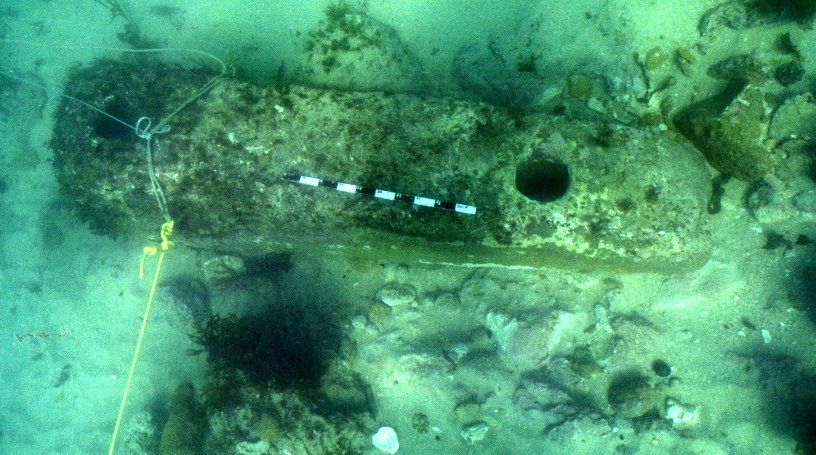 |
SR Rao proposed a budget of Rs. 14 crores for excavation in Dwarka. This is a small amount as govt expenditures go, and its results could have a thousand times the benefit for setting the right narrative. Unfortunately, an RTI reveals how seriously the Hindutvavadis at the helm of govt take these matters.
RTI questions and answers
Srijan Foundation (now called Sarayu Trust) filed an RTI with ASI seeking the following information from the concerned authorities:
- The current status of archaeological excavations at Dwarka
- Government agencies and institutions involved in archaeological excavations at Dwarka
- Place where antiquities are kept excavated from Dwarka excavation site
- Status of the proposal submitted by Archaeologist, SR Rao for the excavation of Dwarka
- Amount of funds allocated for the excavation of Dwarka archaeological site so far
The reply to the RTI, which ASI transferred to CSIR -National Institute of Oceanography can be seen below:
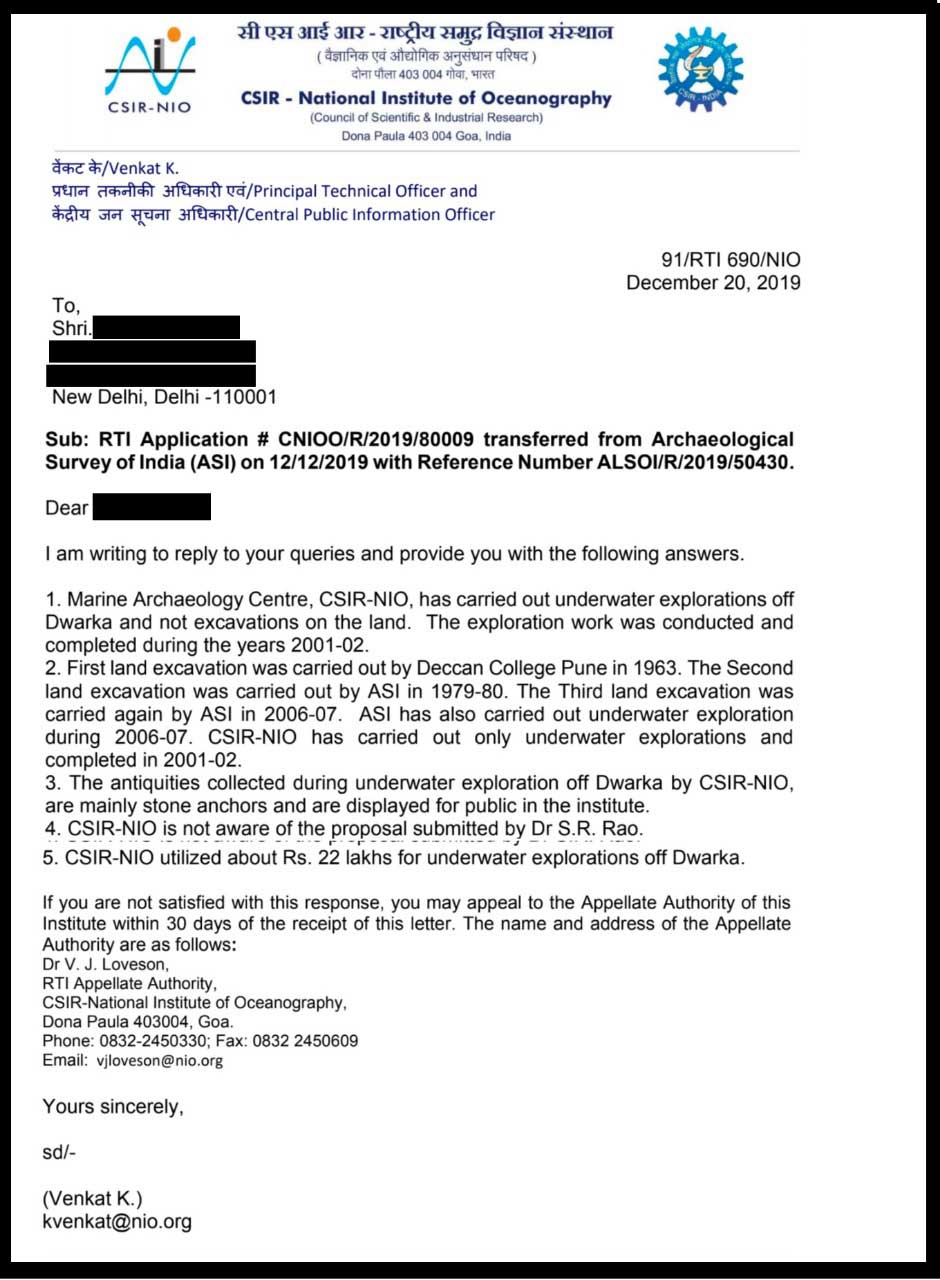 |
What does the RTI reply reveal
The reply reveals that there has been no exploration of the site in the last 13-14 years! Also, the total money spent on underwater exploration has been a paltry Rs. 22 lakh! The reply doesn’t clarify what was spent on ASI’s land and underwater excavations, which appear to be separate from that done by CSIR-NIO. The reply shockingly says that NIO is not aware of any proposal by Dr. Rao. It must be noted that it was under Dr. Rao’s initiative that the NIO had opened a marine archaeology research center in 1981.
This is a shocking state of neglect for Hindu sites by the government. Neither the state nor the central govt is apparently granting funds for a Hindu cause. Compare this with Keezhadi where every year the state govt spends a huge amount of money to explore the site. It granted 25 lakhs in 2015, 30 lakhs in 2016, 55 lakhs in 2018, and Rs. 12.21 crores in the current financial year!
Conclusion
The neglect of Hindu historical sites by the govt shows that its priorities are misplaced. We are always complaining about the wrong and uncharitable leftist narrative of our history, but we must realize that narrative has a scholarly and archaeological base, howsoever rudimentary. The govt must understand that it takes years of patient work and financial resources to counter an established narrative. Excavations at Dwarka and its archaeology can shed some very important light on the history of our civilization. It can give scholarly authority to our epics. Ignoring it points to a surprising lack of judgment on the part of our leaders.
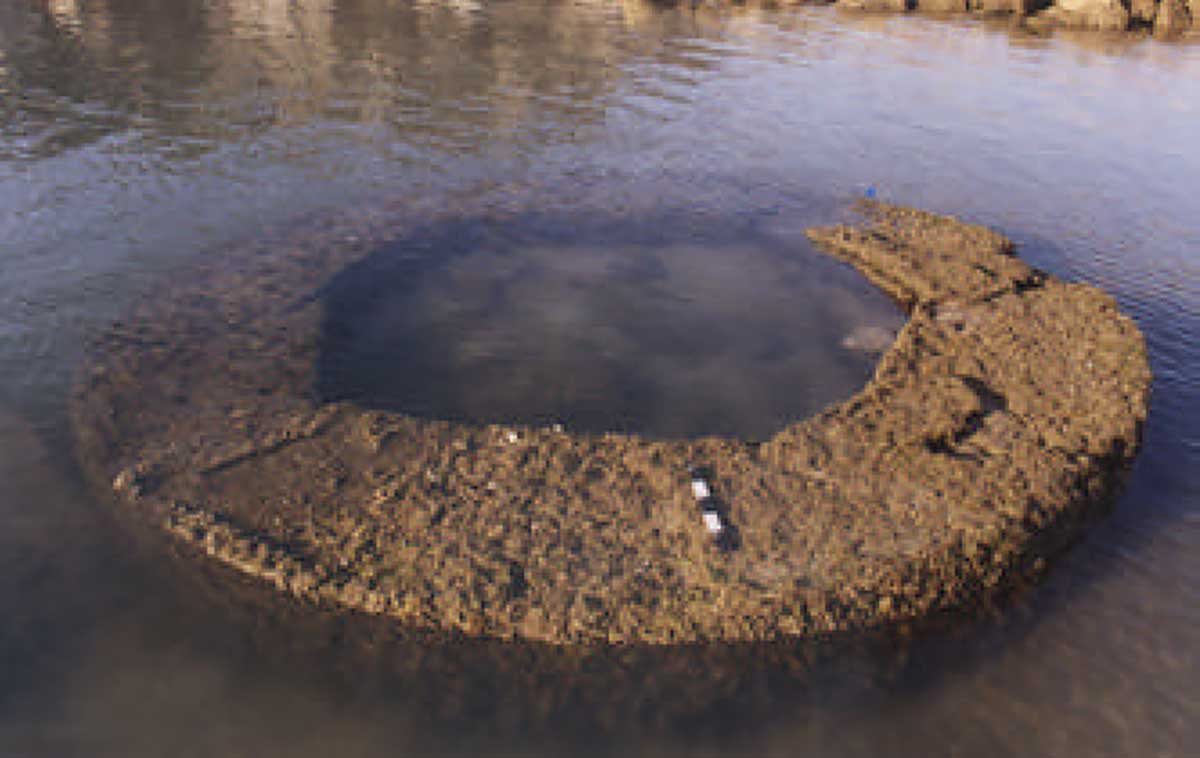 |
Dwarka Exploration
Dwaraka is a coastal town in the Jamnagar district of Gujarat. Traditionally, modern Dwaraka is identified with Dvaraka, mentioned in the Mahabharata as Krishna's city. Dwaraka was a port, and some scholars have identified it with the island of Barka mentioned in the Periplus of Erythrean Sea. Ancient Dwaraka sank in the sea and hence is an important archaeological site. The first clear historical record of the lost city is dated 574 A.D. and occurs in the Palitana Plates of Samanta Simhaditya. This inscription refers to Dwaraka as the capital of the western coast of Saurashtra and still more important, states that Sri Krishna lived here.
The first archaeological excavations at Dwaraka were done by the Deccan College, Pune, and the Department of Archaeology, Government of Gujarat, in 1963 under the direction of H.D. Sankalia. It revealed artifacts many centuries old.
The Marine Archaeological Unit (MAU) of the Archaeological Survey of India (ASI) conducted the second round of excavations in 1979 under the supervision of Dr. S. R. Rao (one of the most respected archaeologists of India). An emeritus scientist at the marine archaeology unit of the National Institute of Oceanography, Rao has excavated a large number of Harappan sites including the port city of Lothal in Gujarat. He found distinct pottery known as lustrous red ware, which could be more than 3,000 years old. Based on the results of these excavations, the search for the sunken city in the Arabian Sea began in 1981. Scientists and archaeologists have continually worked on the site for 20 years.
The project for underwater exploration was sanctioned in 1984, directly by the then Prime Minister for three years. Excavation under the sea is a hard and strenuous task. The sea offers too much resistance. Excavation is possible only between November and February, during low tide. The sea has to be smooth and there should be bright sunshine. All these requirements effectively reduce the number of diving days to 40 to 45 in one season. In order to make maximum use of the time available, divers use echo sounder to get a fairly accurate idea of the location and the depth of the object underwater. The side-scan sonar offers a view of the seafloor. The sonar signals sent inside the water return the signals. Reading of the signals reveals the broad nature of the object underwater. Underwater scooters, besides the usual diving equipment like scuba, were also pressed into service. Between 1983 and 1990, S.R.Rao's team came across discoveries that cemented the existence of a submerged city.
In January 2007, the Underwater Archaeology Wing (UAW) of the Archaeological Survey of India (ASI) began excavations at Dwaraka again. Alok Tripathi, Superintending Archaeologist, UAW, said the ancient underwater structures found in the Arabian Sea were yet to be identified. "We have to find out what they are. They are fragments. I would not like to call them a wall or a temple. They are part of some structure," said Dr. Tripathi, himself a trained diver. Dr. Tripathi had said: "To study the antiquity of the site holistically, excavations are being conducted simultaneously both on land [close to the Dwarakadhish temple] and undersea so that finds from both the places can be co-related and analyzed scientifically."
The objective of the excavation was to know the antiquity of the site, based on material evidence. In the offshore excavation, the ASI's trained underwater archaeologists and the divers of the Navy searched the sunken structural remains. The finds were studied, dated, and documented. On land, the excavation was done in the forecourt of the Dwarakadhish temple. Students from Gwalior, Lucknow, Pune, Vadodara, Varanasi, and Bikaner joined in to help the ASI archaeologists.
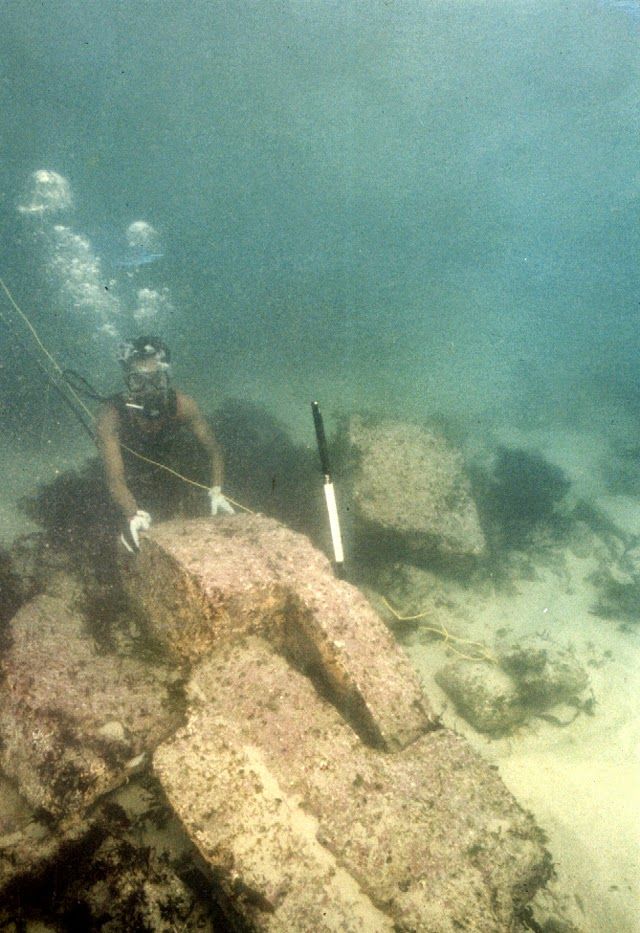 |
Gulf of Khambat Exploration (Gulf of Cambay)
In 2001, the students of the National Institute of Oceanography were commissioned by the Indian Government to do a survey on pollution in the Gulf of Khambat, seven miles from the shore. During the survey, they found buildings made of stones covered in mud and sand covering five square miles. Divers have collected blocks, samples, artifacts, and coppers coins, which scientists believe is evidence from an age that is about 3,600 years old. Some of the samples were sent to Manipur and oxford university for carbon dating, and the results created more suspicion since some of the objects were found to be 9000 years old.
It is indeed overwhelming to find that what had been discovered underwater at the bay of Cambat is an archaeological site, dating back to 7500 BC and older than any previously claimed oldest sites of civilization.
Findings at the Dwarka excavation site
Marine archaeological explorations off Dwarka have brought to light a large number of stone structures. They are semicircular, rectangular, and square in shape and are in water depth ranging from the intertidal zone to 6 m. They are randomly scattered over a vast area. Besides these structures, a large number of varieties of stone anchors have been noticed along with the structures as well as beyond 6 m water depth. These findings suggest that Dwarka was one of the busiest port centers during the past on the west coast of India. The comparative study of surrounding sites indicates that the date of the structures of Dwarka may be between the Historical period and the late medieval period. The ruins have been proclaimed the remains of the legendary lost city of Dwarka which, according to ancient Hindu texts, was the dwelling place of Krishna.
The underwater excavations revealed structures and ridge-like features. Other antiquities were also found. All the objects were photographed and documented with drawings - both underwater. While underwater cameras are used for photography, drawings are done on boards - a transparent polyester film of 75 microns fixed with a graph sheet below. The graph sheet acts as a scale. One or two divers take the dimensions and the third draws the pictures. The Public Works Department routinely conducts dredging in these waters to keep the Gomati channel open. This throws up a lot of sediments, which settle on underwater structures. Brushes are used to clear these sediments to expose the structures.
- Explorations yielded structures such as bastions, walls, pillars, and triangular and rectangular stone anchors.
- A semi-spherical single-hole stone that might be the base for the flagpost.
- L-shaped edges of stones for proper grip and arresting wave action on bastions.
- Seals, inscriptions, which have been dated to 1500 BC.
- Pottery, which has been dated to 3528 BC.
- Stone sculptures, terracotta beads, bronze, copper, and iron objects
Until recently the very existence of the city of Dwarka was a matter of legends. Now, that the remains have been discovered underwater, and with many clues seeming to suggest that this, indeed, is the legendary Dwarka, the dwelling place of Lord Krishna, could it be that Lord Krishna and his heroics were more than just a legend?
 The underwater city. Photo courtesy: cdn. earthporm |
Findings at the Gulf of Khambat excavation site
On the other hand, explorations conducted in the Gulf of Cambay, waters revealed sandstone walls, a grid of streets and some evidence of a seaport 70 feet underwater, and artifacts dating back to 7500BC. Among the artifacts recovered were a piece of wood, pottery sherds, weathered stones initially described as hand tools, fossilized bones, and a tooth. Artifacts were sent to the National Geophysical Research Institute (NGRI) in Hyderabad, India, the Birbal Sahni Institute of Paleobotany (BSIP) in Lucknow, India, and the Physical Research Laboratory in Ahmedabad, India. The piece of wood was carbon-dated to an age of 9,500 years old.
NIOT returned for further investigation in the Gulf from October 2002 to January 2003. During these excavations, NIOT reported finding two paleochannels flanked by rectangular and square basement-like features. Artifacts were recovered by means of dredging, including pottery sherds, microliths, wattle, and daub remain, and hearth materials. These artifacts were sent for dating at the laboratories of Manipur University and Oxford University and were concluded to be 9000 years old
Mainstream scientists maintain that ancient Indian culture/civilization goes back some 4-5 thousand years. Yet the ruins below the Gulf of Cambay go back at least 9 thousand years proving that the ancient Indian civilization is much older than originally believed.
 |
Correlation of Dwarka exploration site with the Dwarka of Mahabharata
A few years ago, when asked as to how sure he was that this was Krishna's Dwarka, Rao had replied, "only the name board is missing." He submitted a proposal to the Ministry of Culture in January 2000, that aimed at preserving the 'underwater cultural heritage of India Dwarka' and also promoting it as a pilgrimage-tourism center. His proposal, in three stages, was to cost Rs 14 crores. Sadly, the proposal was not taken up. The then Secretary, Ministry of Culture, visited Dwarka and promised help, but nothing has been heard so far.
In the project proposal, Rao writes, "The fort walls of the first town of Dwarka said to have been founded at Kusasthali in Bet Dwarka island have been traced onshore and in the sea and also dated by thermoluminescence dating method to 16th century BC." According to him, the clue to the existence of ancient Dwarka near the modern town of Dwarka was found during an archaeological excavation near the Dwarkadhish temple in 1979-80. Eroded debris and pottery provided evidence of a port town destroyed by the sea about 3,500 years ago. This evidence is what led to the early excavations in the Arabian Sea, near the mouth of the Gomati river, where the modern town of Dwarka stands.
The Indian mythology is replete with accounts of how the original Dwarka looked like. Mahabharat says that Dwarka had 900,000 royal palaces, all constructed with crystal and silver and decorated with emeralds. The city was connected by an elaborate system of boulevards, roads, marketplaces, assembly houses, and temples. These legends have been etched into the Indian minds for so long that their authenticity is not questioned. Fortunately, due to the grace of the marine archaeological department of India, childhood stories have come to be a reality to a great extent.
Marine archaeological explorations have thrown light on several structures of different shapes, stone anchors, and other artifacts. The exploration has found sandstone walls, a grid of streets, and remains of a seaport, some 70 feet beneath the sea. The evidence points to the fact of the existence of a city some 9,000 years ago. Also according to them, this was one of the most important and busy ports during historical and medieval periods.
The detailed exploration and excavation of this sunken city were started in 1988 with certain goals and results in mind:
- The explorations were extended up to the Temple of Samudranarayan (Sea God), to trace the extent of the port city and the purpose behind the massive stone walls built on the banks of the ancient Gomati River.
- Whether the architectural features conformed to the ones described in the Mahabharat.
- To obtain more corroborative evidence for reclamation referred to in the epic.
- The nick point where the Gomati River joined the sea had to be determined.
- The cause of the submergence
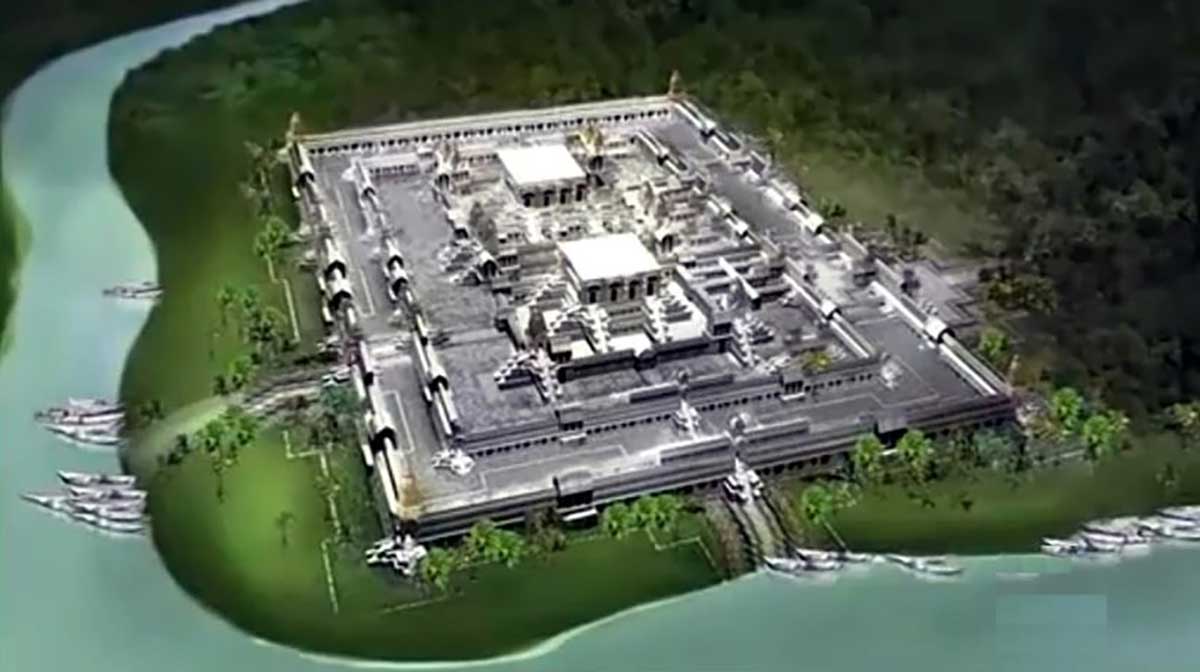 |
Dwarka was supposed to have been built on six blocks, two on the right bank and four on the left. All the six sectors have protective walls built of dressed stones of sandstones. Whatever has been traced so far conforms to the description of Dwarka in the Mahabharat to a large extent. For example, the enclosures may correspond to the Antahpurs (harems) of the texts.
Similarly, the large number of stone anchors is indicative of overseas trade. The large ships were anchored to the sea, whereas the small ones were near to the warehouses on the Gomati, part of which has been submerged.
The layout of the excavated city, the spread, and the location of fort walls and bastions match the descriptions mentioned in Harivamsha, a prologue to Mahabharata. Harivamsha described the city of Dwarka in minute detail. According to it, the area of Dwarka was 12 yojanas. It was connected to the mainland by a strip, which is visible even now, in low tide. The city excavated is of the same size.
Harivamsha, detailing the security arrangements, says that there were seals, without which one could not enter the city. Seals of a particular description were found on the seabed. A stone image of Vishnu, chert blades, and pottery are all part of the recovered objects. Certain coins were found during excavations underwater having inscriptions similar to details found in Mahabharata.
Elaborating on the town plan of first Dwarka, Rao's proposal says, "There were two fortification walls. One in the lower terrace and another in the middle terrace. The walls which extended over a length of 4 km on the eastern shore are mostly destroyed by sea action. The walls of the lower terrace are of massive, dressed sandstone blocks while that of the upper terrace are of rubble. The houses and other public buildings, built of smaller size stones within the enclosure are all destroyed and leveled up by the encroachment of the sea. These structures lie in a depth of 7 to 10 meters, below the present mean sea-level, indicating a rise of 10 meters in sea-level during the last 3,600 years." The reclamation of land from water-logged areas, referred to in Mahabharata, to build the city, is also attested by the boulder foundations over which walls and bastions were raised.
Marine archaeology has proved that the existence of the Dwarka and its submergence in the second millennium B.C referred to in the Mahabharat, Harivamsa, Matsya, and Vayu Purans (Sanskrit texts) is a fact and not fiction. The implications of accepting the archeologists’ finds as proof that the sunken city is indeed the legendary Dwarka would be very significant for the understanding of what the Mahabharata is. It would no longer be merely a book of myths and legends, but, at least to some extent, a genuine account of past events.
Speculations and Conclusions
Based on the correlation between the excavated structures and artifacts with the description of Dwarka in Harivamsha Purana, and the fact that the carbon dating of artifacts falls around 3500BC, the same period concluded by many astronomical analysts as the period of the Mahabharata war and the submersion of Dwarka, it is more than reasonable to conclude that the excavated site near Bet Dwarka is indeed the legendary city of Dwarka.
The discovery of the second exploration at the Gulf of Khambat proves that it was not just Dwarka that got submerged, but more coastal regions got encroached by the sea over centuries, and the dating of artifacts to 7500BC indicates that the ancient Indian civilization is more than 9000 years old, and the entire coastal regions have been going undersea from 9000BC, and this phenomenon took over the city of Dwarka by around 3500BC.
Before the discovery of the legendary city of Dwaraka, some scholars were of the view that the Hindu Epic Mahabharata is only a myth and that it would be futile to search for the remains of the ancient city and that too in the sea. Few scholars also believe that the Mahabharata battle was a family feud that was exaggerated into a war. Excavations of Dr. S. R. Rao at Dwaraka prove that the descriptions found in the texts are not to be discarded as fancy stories but are to be treated as based on logic and reasoning.
Thus the results have proved that the account in Mahabharata as to the existence of a beautiful capital city of Dwaraka of Sri Krishna was not a mere figment of imagination but it did exist.
 |
What happened to Dwarka
The rise in the sea level in Dwarka is a scientific truth. Studies have proved that the sea considerably and suddenly rose to submerge the city. Harivamsha describes the submerging of Dwarka saying Krishna instructed Arjuna, who was then visiting Dwarka, to evacuate the residents of the city as the sea was going to engulf the city. "On the seventh day (of Krishna saying this), as the last of the citizens were leaving the city, the sea entered the streets of Dwarka."
According to experts, there could have been three reasons why the sea entered the land. One, a change in the level of the seabed, two, a massive earthquake, and three, the sudden increase in the level of seawater. Of the three, the last is the most plausible. If it was a change in the level of the seabed, some remains of the "tearing off action" on the shore would be visible, which is absent. An earthquake can be ruled out as the structures have not collapsed because of the shake. The third reason
is most acceptable as a similar phenomenon had occurred on the shores of Bahrain, around the same time, as some recent findings indicate. It is to be noted here that considerable work has been done onshore and offshore underwater excavations in Bahrain, which has indicated a deep and regular trade and other relations between the western coast and the coasts of the present-day Bahrain region.
The unfortunate halting of the excavation
But the work on further excavation has met a formidable roadblock in the form of academic indifference and government apathy. A proposal was submitted to the government by Dr. S.R. Rao, a renowned marine archaeologist, who led the underwater investigations been collecting dust for over four years now.
It is clear that for almost a decade the Central Government had not shown much interest in the excavations in Dwarka or the one at Gulf of Cambay. Though the discoveries at the Gulf of Cambay by the National Institute of Ocean Technology established carbon-14 date of 7,500 to 9,000 years for the wood samples excavated from under the sea and the existence of a civilization dating to that period, it might not be directly connected with Krishna's Dwarka which Shri Rao believes existed some 4,000 years ago. This, however, might help in ascertaining the rise in the sea level about 30 meters in 7,500 years, approximately at the rate of 10 meters in 3,500-3,800 years. Dr. Rao is on record that Dwarka excavation was carried out almost fully but the excavation in the inter-tidal zone of Balapur Bay in Bet Dwarka where further antiquities may be found, has not been carried out partly due to the lack of funds and mainly due to lack of interest in the CSIR.
Dwarka, as of today is still one of the best-studied underwater sites in India.
 |
SR Rao's proposals
The proposal envisaged three-stage heritage conservation. This was to be done along with further excavations in Bet Dwarka. It was suggested that access to the submerged city in Dwarka water can be given to visitors, in fair season, through underwater acrylic tubes or viewing chambers at specific points. Such facilities exist in Singapore and Auckland (New Zealand). Alternatively, underwater video cameras can be used to project images above water, in monitors.
The project also mooted the idea of a submarine museum of dolphins as they are in good population in deeper water, off Dwarka. There is also a strong case for a Maritime Museum of Antiquities found in excavations at Dwarka, Bet Dwarka, Somnath, Nageswar, and dioramas of Lothal port and Dwarka city. As of now, the Dwarka antiquities are lying in NIO, Goa.
It is again a telling story of the system in India, which is the cause of the lack of interest in the project. Such a discovery in any other country would have been approved and encouraged. The excavation on Dwarka was done by Rao, who was with the National Institute of Oceanography, Goa. Though work remained to be done, the CSIR, under whom falls the NIO, did not release the funds. A further extension to Rao was not given as he had already reached the age of 72.
It is indeed surprising that the historical associations, archaeologists, and historians have taken little notice of the findings at Dwarka. In its early days, the project received UNESCO to support and several foreign marine archaeologists also offered help. However, the government's indifference to the project has kept them away. Unlike several other land excavations, the underwater excavations can be done only with total government help. Several levels of permissions are needed. While land excavations are demanding in labor, underwater explorations need machinery and equipment. Skillful divers, who are trained to look for meaningful objects are required too.
For an Indian, Dwarka is not a mere archaeological site, nor is it proof. Indians have all along believed Mahabharata to be a historical narration. But the excavations are a national heritage, a symbol of pride, an honor that is shared by all who are born in this land of Bharata. It is a call for action on Dwarka.
References:
Dwarka to Kurushetra. Dr. S. R. Rao. Journal of Marine Archaeology (1995-96)
Underwater Cultural Heritage. A.S Gaur and K. H Vora. Current Science Volume 86 No 9 May 2004
Further Excavations of the Submerged City of Dwarka. S. R. Rao. Recent Advances in Marine Archaeology
News Articles (Hindu, Deccan Herald, Reuters)
rafalreyzer.com, hindupost.in, mahabharata-research.com
 Support Us
Support Us
Satyagraha was born from the heart of our land, with an undying aim to unveil the true essence of Bharat. It seeks to illuminate the hidden tales of our valiant freedom fighters and the rich chronicles that haven't yet sung their complete melody in the mainstream.
While platforms like NDTV and 'The Wire' effortlessly garner funds under the banner of safeguarding democracy, we at Satyagraha walk a different path. Our strength and resonance come from you. In this journey to weave a stronger Bharat, every little contribution amplifies our voice. Let's come together, contribute as you can, and champion the true spirit of our nation.
 |  |  |
| ICICI Bank of Satyaagrah | Razorpay Bank of Satyaagrah | PayPal Bank of Satyaagrah - For International Payments |
If all above doesn't work, then try the LINK below:
Please share the article on other platforms
DISCLAIMER: The author is solely responsible for the views expressed in this article. The author carries the responsibility for citing and/or licensing of images utilized within the text. The website also frequently uses non-commercial images for representational purposes only in line with the article. We are not responsible for the authenticity of such images. If some images have a copyright issue, we request the person/entity to contact us at This email address is being protected from spambots. You need JavaScript enabled to view it. and we will take the necessary actions to resolve the issue.
Related Articles
- When Secular Nehru Opposed Restoration Of Somnath Temple - The Somnath Temple treachery
- A new symbol of Hindutva pride, Shri Kashi Vishwanath Temple Corridor
- Malaysia and Singapore are allowing temple entry with Covid protocols but here in Tamil Nadu, India Devotees are denied entry to Palani temple on Thaipusam festival: Thaipusam is an important festival of the Tamil community
- Once again lampooning Hindu religious sentiments, TN HRCE approved a project to build a fish market on temple land using temple money
- A Different 9/11: How Vivekananda Won Americans’ Hearts and Minds
- Master of fabrication and deceit: 4 occasions where eminent “historian” D N Jha misled to suit the narrative
- Calcutta Quran Petition: A petition to ban the Quran altogether was filed 36 years ago, even before Waseem Rizvi petitioned for removing 26 verses from Quran
- CM Basavaraj Bommai announces that Karnataka govt is going to bring the bill to free temples from govt control: A ray of Hope for the rise of Hindutva
- “The bigmouths never visited Lord Ram’s birthplace and kept on playing politics”: Ram Mandir chief priest says only BJP cares about Ram Mandir, Modi did Shilanyas and CM Yogi visited 40 times
- PM Narendra Modi inaugurated the Statue of Equality of Sri Ramanujacharya and emphasized 'Progressiveness does not mean detaching from one’s roots and that there is no conflict between progressiveness and antiquity.'
- Kerala govt. employees to pay Jizya tax on undertaking Sabarimala pilgrimage
- After removing 500 tons of garbage, 18th-century old stepwell to soon serve with clean, fresh groundwater gushing from 53 feet deep water stream: Nalla Pochamma Temple, Telangana
- Unsung Heroine Pritilata Waddedar, Who Shook The British Raj at the age of 21
- Freedom struggle of Gurjars against Britishers at Koonja in 1824: 100s of Gurjars Martyred and 100s Hung in Single Tree
- ‘Casteless Hindu’ is Not a Paradox. It is The keystone of ‘Ghar Wapsi’ and Hindutva
















